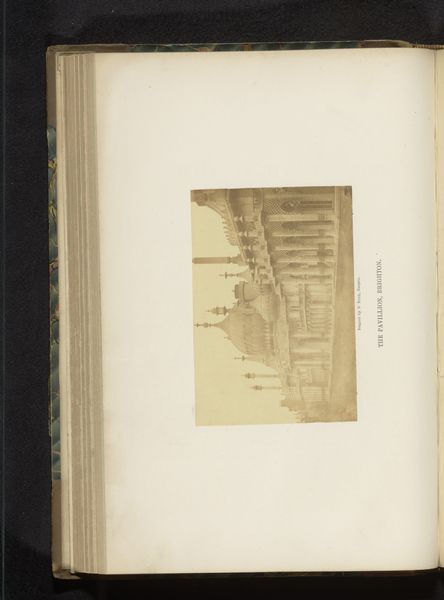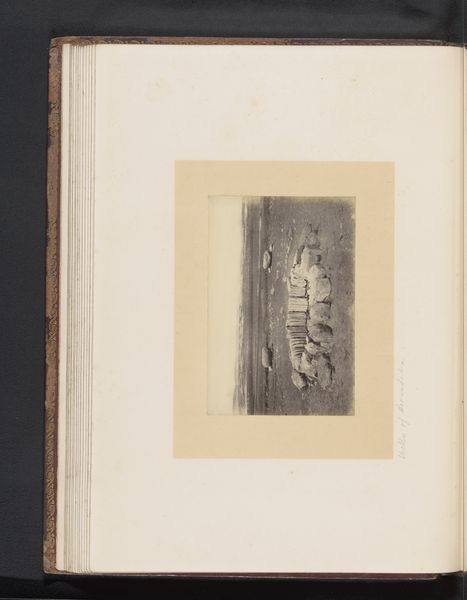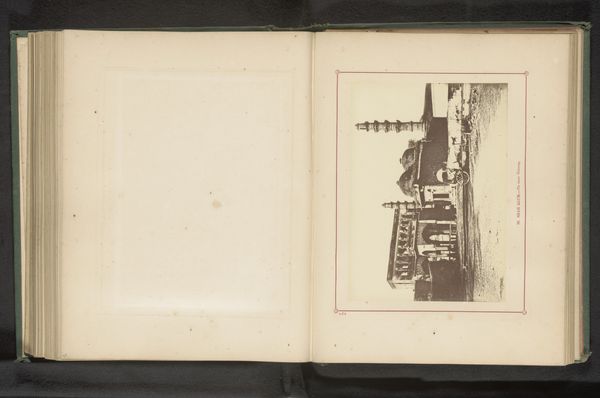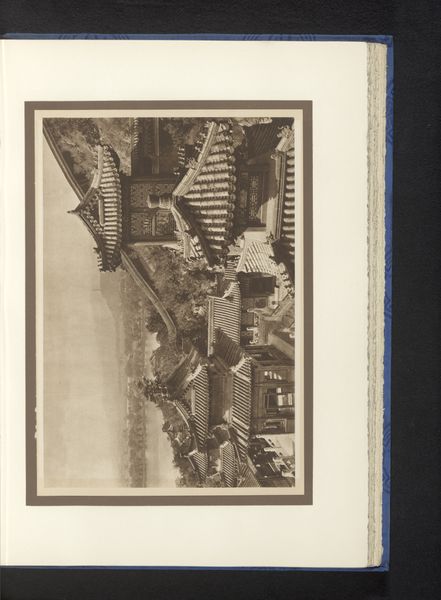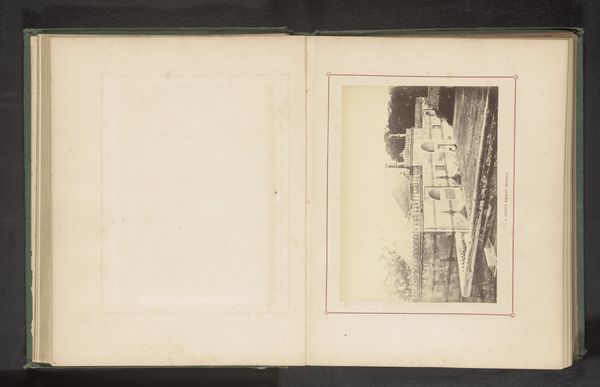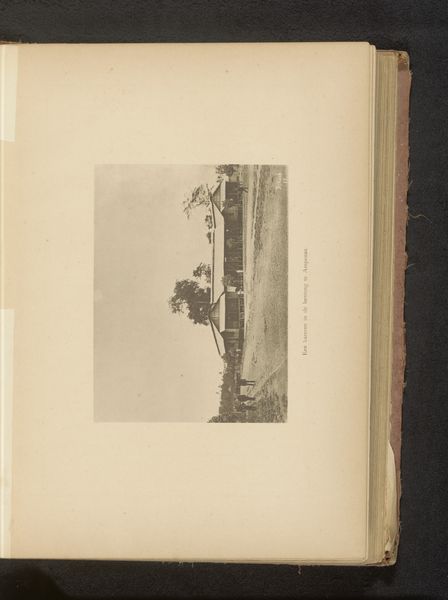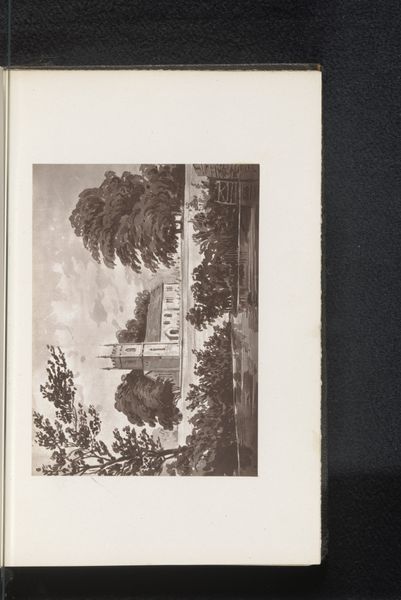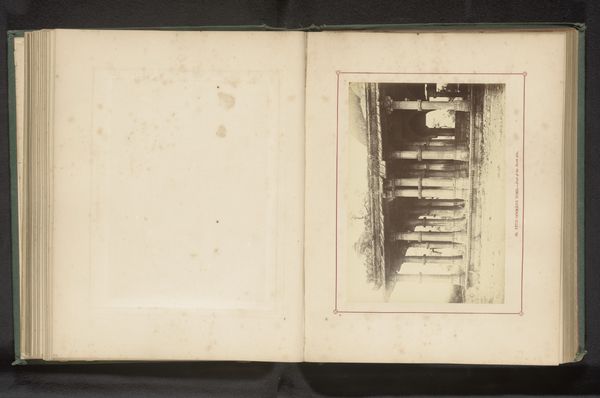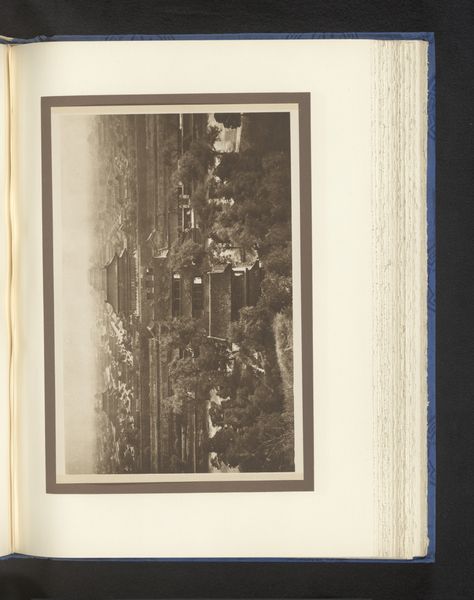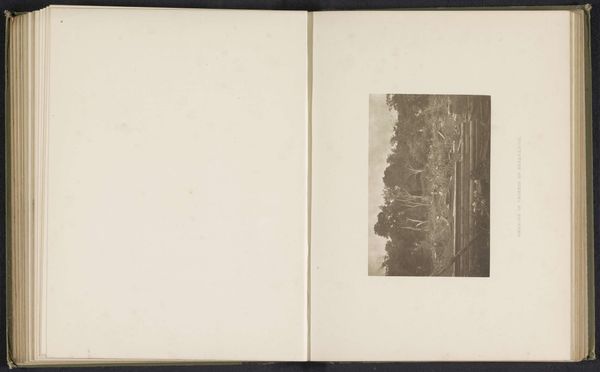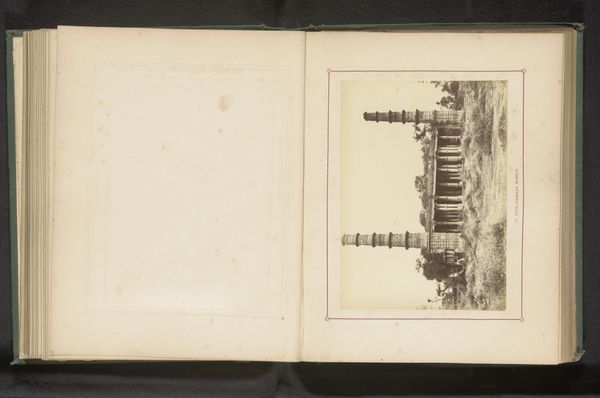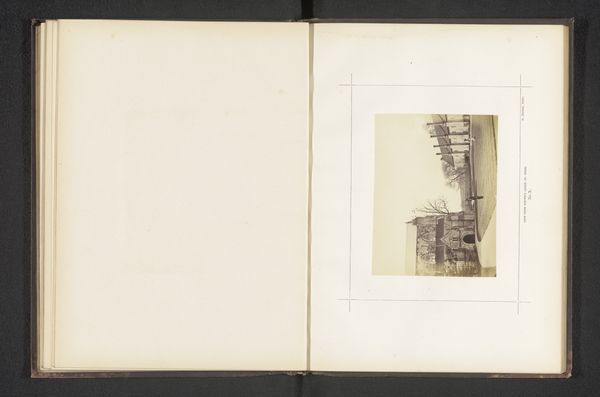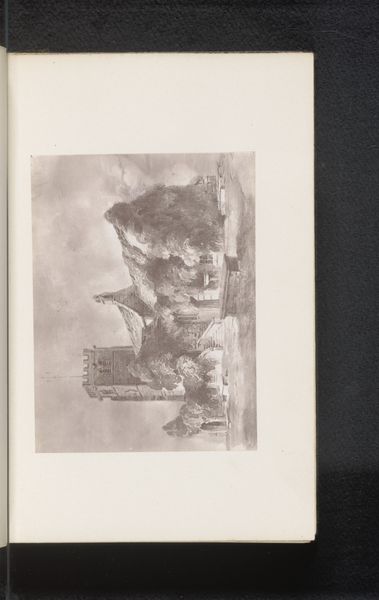
Fotoreproductie van een gravure, voorstellende een gezicht op Herstmonceux Castle before 1876
0:00
0:00
print, etching, engraving, architecture
#
aged paper
# print
#
etching
#
landscape
#
engraving
#
architecture
#
building
Dimensions: height 71 mm, width 136 mm
Copyright: Rijks Museum: Open Domain
Curator: This is a photo reproduction of an engraving dating before 1876, titled "The Southwest View of Herstmonceux Castle." Editor: It's quite stark, isn’t it? The detail is fascinating, but there’s a chill to the image, a certain solemnity that comes across right away. It almost feels like a document, or a survey. Curator: It is likely intended as just that, a kind of visual record. During this period, such engravings played a crucial role in disseminating knowledge about architectural styles and properties to a wider audience. Consider it a visual archive predating widespread photography. Editor: The castle itself—what do you make of its portrayal? I see repeated motifs. Those square towers... almost like repeating watchtowers that feel severe and unwavering. What about the name? It includes "hurst," for a wooded area? Curator: That's right. The 'hurst' likely refers to a wooded area, quite possibly where the castle was originally situated. The architectural style points toward a transitional period. Herstmonceux saw major socio-political change, passing through powerful families during the Plantagenets or Tudors periods; structures like these declared that legacy through very imposing architecture. Editor: Do you think there’s a particular symbolism inherent in these sorts of images? Was it important to showcase power in landscape to enforce a type of territorial domination? Curator: Absolutely. The visual dominance of the castle within the landscape is carefully constructed. Note the viewpoint: The engraver places us in a subordinate position looking up, exaggerating the castle’s grandeur. This reinforces the owners' power. It says “This is who is in charge.” Images such as these functioned within very specific social power structures. Editor: It certainly projects a sense of authority. Thinking about it now, the repetition in design and near-perfect perspective could almost function as emblems of both strength and control. Curator: It becomes apparent that an image communicates power in very distinct ways; it tells us so much about how that power dynamic once looked, and can be assessed centuries later. Editor: A striking visual declaration with echoes through time.
Comments
No comments
Be the first to comment and join the conversation on the ultimate creative platform.
